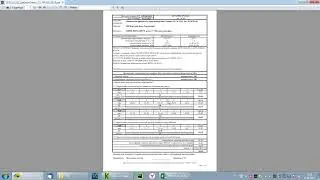Spring shoots a block up a ramp: find the speed at the equilibrium length, maximum sliding distance
00:00 A coiled spring shoots a block up a ramp, and we want to find the speed at the equilibrium length (when the spring is expanded back to its natural length) and the maximum sliding distance up the ramp. We are given the spring constant, initial compression distance, angle of incline and the mass of the block and each part of the problem can be solved with conservation of energy.
00:33 Speed of the block when the spring expands: to solve for the speed of the block, we use energy conservation. We set the zero of the y coordinate to the initial height of the block, and we have to use trigonometry to find the final y coordinate of the block. When we apply conservation of energy, our initial energy is just the spring potential energy, and the final energy has two terms: the kinetic energy of the block and the gravitational potential energy of the block. The only unknown is the speed, so we can solve for the final speed of the block.
02:44 Maximum sliding distance for the block: there are several approaches to this part of the problem, but we approach it by using the initial state of the system (stationary with the spring coiled) and comparing that to the final state of the system (block at maximum height and stationary as it's turning around). Again we have to use trigonometry to relate the sliding distance to the height of the block. We set up the equation for energy conservation and on the left side we have spring potential energy, while the right side has only gravitational potential energy. The sliding distance is the only unknown, so we solve for the sliding distance and we're done!







![[ FREE ]](https://images.mixrolikus.cc/video/QlPtNxxrtB8)